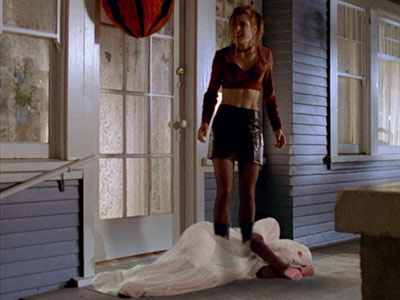We all love OpenSim. That’s why we’re here. But some of us aren’t as good at communicating it as others.
One reason could be that a large part of the human population, especially the technically savvy and the creative folks, hate the idea of marketing.
They’ve been the victims of marketing, and they don’t like it, and don’t want to impose it on others.
We all remember examples of bad marketing. In intrusive ads. The spam filling up our inboxes. The loud television commercials. But we rarely notice or comment on the good marketing. Good marketing just works, and it makes our lives better, and often you can’t even tell that it’s marketing.
Rule 1. It’s all marketing
It’s all marketing, everywhere you look. My clothes are marketing me, as a person. My kids’ friends are marketing their new cell phones to one another. My cat is marketing herself so I’ll feed her.
Some of this is White Hat marketing. My kids now know which cell phones they want to buy, and which ones are too expensive and not worth it.
Some of it is Black Hat marketing. My cat is blocking the view of my monitor and she’s already been fed, anyway. Is her goal to annoy me enough to get fed twice? And so, Real Life Cat Spam is born.
Some of it is just bad marketing. My pajama pants-and-sweatshirt combo isn’t exactly screaming “sexy fun single” here.
Or say I’m looking for a new office building for my grid — which I am. I don’t know where to go to find out. Me, who runs the biggest directory of hypergrid destinations. Hold on — slaps self on head — I might not know what grid to go to, but I do know of an online marketplace I could check. And look, I found this really cool, low-cost auditorium, and this nice exportable villa which could be converted to a cute small office, or this building by Oddball O’Toole.

But it’s still not quite what I want. Somewhere, someone has the building I want. And I have money to give to them in return for that building. But there’s no marketing to bring us together. So the creator is sitting there, without my money. I’m sitting here, without my building. We’re both worse off.
Rule 2: Put the customer first
White Hat marketing is all about what the customer wants and needs, at a price the customer can afford, at a time and place that’s convenient to the customer.
The restaurant promoting its healthy sandwiches with a sign that you just happen to walk past on your lunch break every day — that’s White Hat marketing. You want that sandwich. You can afford that sandwich. That sandwich is in a convenient location. And that sandwich is available at lunch, just when you need it.
You probably don’t even think of it as marketing.
The unsolicited add for knock-Viagra that you get in your inbox, though, is — I’m guessing here — not something you want. Or want to waste money on. And its not convenient for you to have to delete that email, and you probably just wish those people would go somewhere else.
That’s Black Hat marketing. Shouting at you, or annoying you, or lying to you, or making you feel worse about yourself, or otherwise bullying you into buying.
Or telling you you want one thing when you really want something else.

Rule 3: It’s about connecting the dots
I’m over here, on my grid, without a roof over my head, the hot Mediterranean sun blazing down on me, no place to rest my feet after spending all day debugging gate scripts. I’d love to sit down in my new office and just relax and watch the waves wash in.
My perfect building is elsewhere, on some other grid.
Finding it at random would be almost impossible — there are over 50,000 regions out there, or more than 800,000 acres of virtual land to explore.
What I need is a trail to follow that leads me to what I need. Some breadcrumbs or signposts. Anything, really.
White Hat marketing is about creating that trail in such a way that it’s visible only to the people who need it, people who can then follow it at their own pace.
Black Hat marketing is more like a conveyor belt that a thug jumps out and ties you to. A conveyor belt to … hell! Or Taco Bell. Whatever.
If your marketing helps people find you when they are looking for you, that’s White Hat marketing.
In the case of that builder with my dream house, that could be a listing on the Kitely Market or OpenSim Creations, or social media outreach via Twitter, or the Virtual Products section of the OpenSim Virtual Google Plus community. It could be a search engine listing. Right now, searching for “opensim mediterranean house” doesn’t bring up anything I haven’t seen yet.
Or it could be a friend dropping me a note about where to find the house I want. That’s word-of-mouth marketing, and it requires both satisfied customers and and an easy way for those customers to recommend you.
Or it could be Website advertising, or in-world banners, or listings in the Hyperica directory — or free Hyperica ads — or any of a million other mechanisms that would help get me from here to there. Â Or a free promotional kiosk on the Hyperica grid.
Just look at all these empty storefronts on the new Hyperica hyperport:

Rule 4: It’s about timing
I need my new house today. If my dream house was mentioned on Twitter yesterday, and I missed it, I might never find it.
There’s a rule of thumb in marketing that it takes, on average, seven points of contact between a buyer and a seller before the buyer actually makes a purchase.
Maybe the buyer wasn’t ready to buy, or didn’t have the money for the purchase, or didn’t have the time just then the first six times they cam across your offer.
In order to make sure your customer can connect with you, you need to ensure that the path to your door is there at the exact time the customer needs it.
One way is to use marketing channels that are not time sensitive. A store on the Kitely Market, for example, or a listing on OpenSim Creations, is there for ever. Pretty much.
Search engines are another channel, but you need to make sure that you stay near the top of the results, by, say, updating your site.
Another way is to time your marketing for when you know your customers are going to need your products, like back-to-school sales or holiday sales for products that fit those categories.
The last option is to repeat your marketing on a regular basis, while being careful to run it just often enough so that people can find you, but not so often that it becomes annoying.
Rule 5: It’s about trust
When it comes to my favorite shopping outlets, I go back over and over again, and recommend them to my friends, because I trust them. I know that the products are going to be good — or, if there’s a problem, that they’ll fix it right away. I know they’ll have the selection I need. I know they’ll be pleasant to deal with.
These days, for me, that’s the Kitely Market. I can be reasonably confident that all the products are legally licensed, that everything works, and that if I search for exportable products then I will, in fact, be able to take them to other grids.
Black Hat marketing fails in the long term because it breaks down that trust. The overzealous car salesman who sells you a lemon is not doing that car dealership any favors — I certainly won’t be coming back, and I’ll be telling all my friends to avoid it, as well.
Black Hat marketing thus has a double price. Not only does it cost more than White Hat marketing because it’s more aggressive, but it also loses its effectiveness rapidly, so you have to pay even more for even more aggressive Black Hat marketing the next time around.
Search engine optimization is one example of this. If you pay a bad guy to create fake links to your website, you’ll get a boost in your search rankings — at first. But then Google will catch on and penalize your site, and you’ll have to work twice as hard and pay twice as much just to get back to where you were before.
White Hat marketing builds on itself. Great content, combined with good service leads to happy customers, who are both more receptive to your marketing in the future, and more willing to recommend you to others. So you spend less and less on marketing over time, and get more and more out of it.
Bonus rule: People actually want good marketing
I love finding out that my favorite products are on sale at my favorite stores.
I love hearing that there’s a new movie from my favorite director, a new book from my favorite author.
Good marketing helps everyone. Without good marking, without being able to find the products and services we need, we’ll either do without, or settle for inferior products.
Or make everything from scratch, which would mean that my only outfit would be a bedsheet with holes cut out for eyes.
Which reminds me of the time when Willow dressed as a ghost for Halloween on Buffy the Vampire Slayer.

And now I feel like heading off and watching all seven seasons again from the start. I just love that show so much.
- Kitely Mega Worlds on sale for $90 per month - July 19, 2024
- OpenSim regions up, actives down with summer heat - July 15, 2024
- People think AIs are conscious. What could this mean for bots in OpenSim? - July 12, 2024
